Abstract
The inhibitory effects of 29 commercial powdered spices on the growth and toxin production of three species of toxigenic Aspergillus were observed by introducing these materials into culture media for mycotoxin production. Of the 29 samples tested, cloves, star anise seeds, and allspice completely inhibited the fungal growth, whereas most of the others inhibited only the toxin production. Eugenol extracted from cloves and thymol from thyme caused complete inhibition of the growth of both Aspergillus flavus and Aspergillus versicolor at 0.4 mg/ml or less. At a concentration of 2 mg/ml, anethol extracted from star anise seeds inhibited the growth of all the strains.
Full text
PDF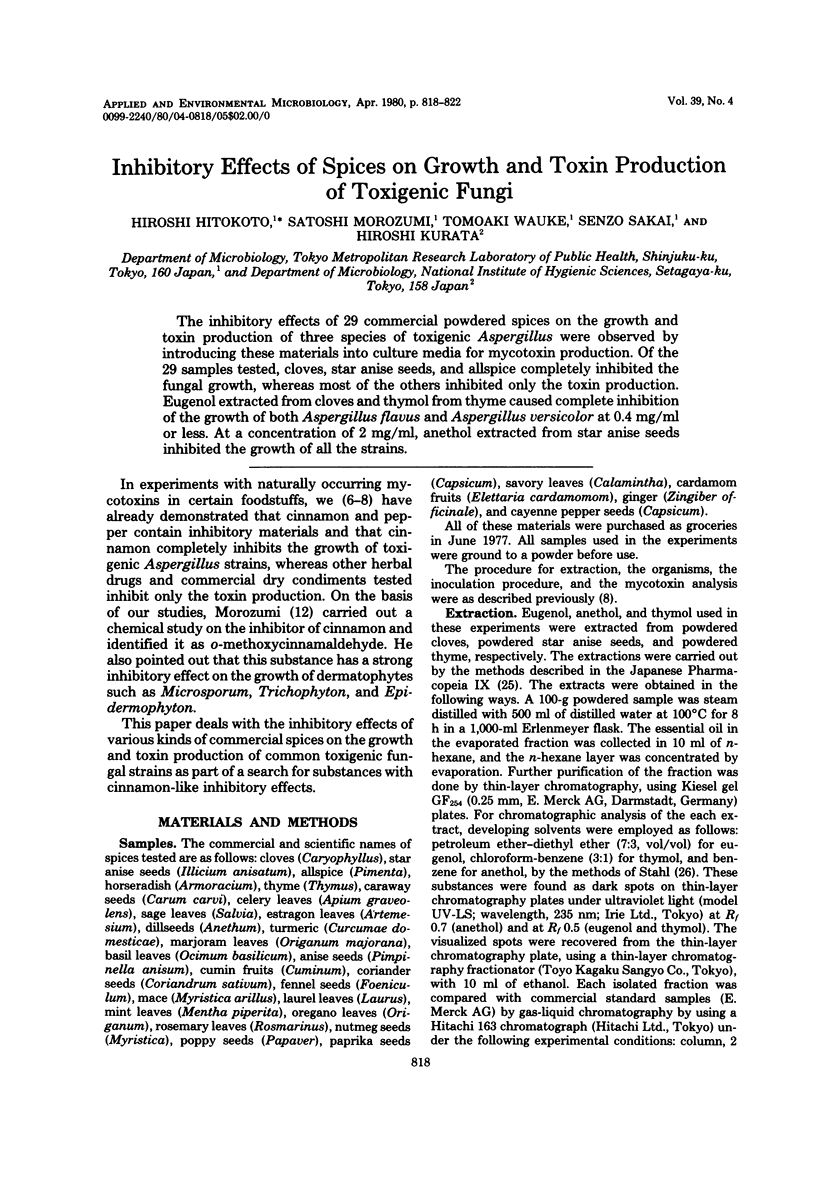
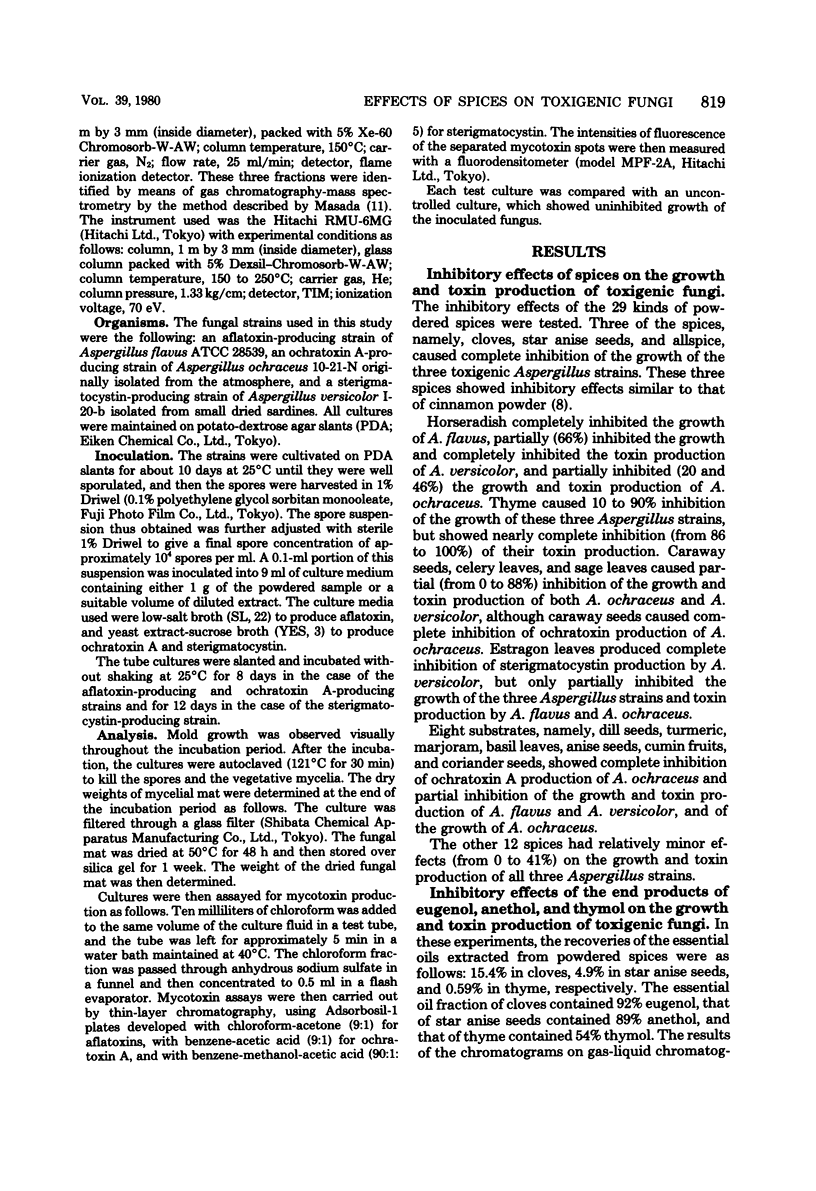
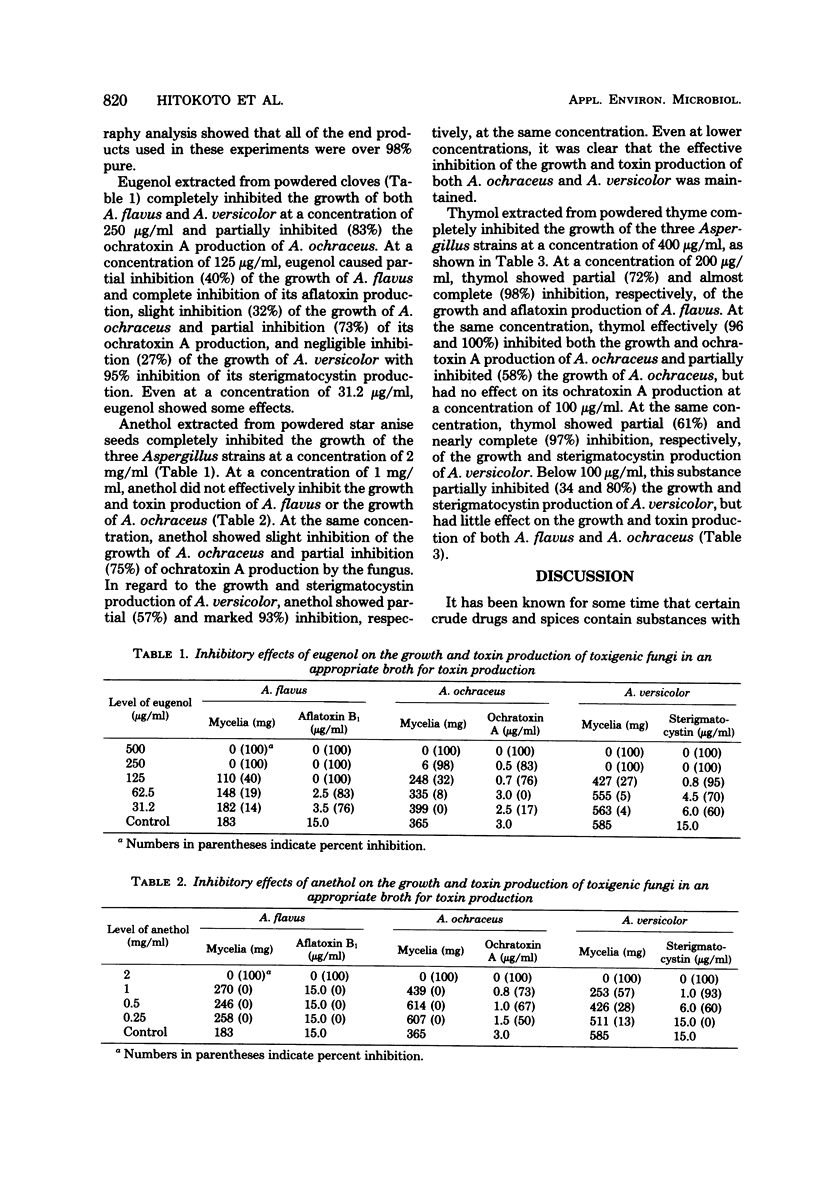
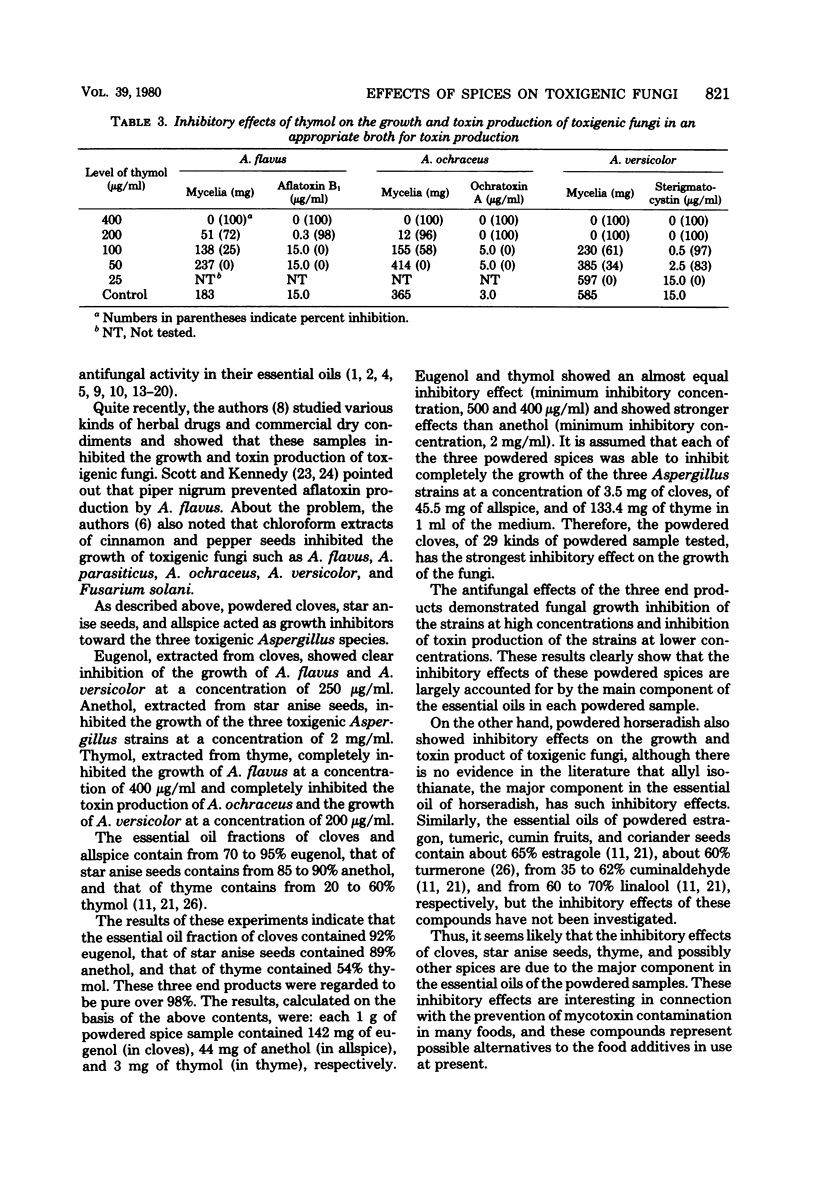
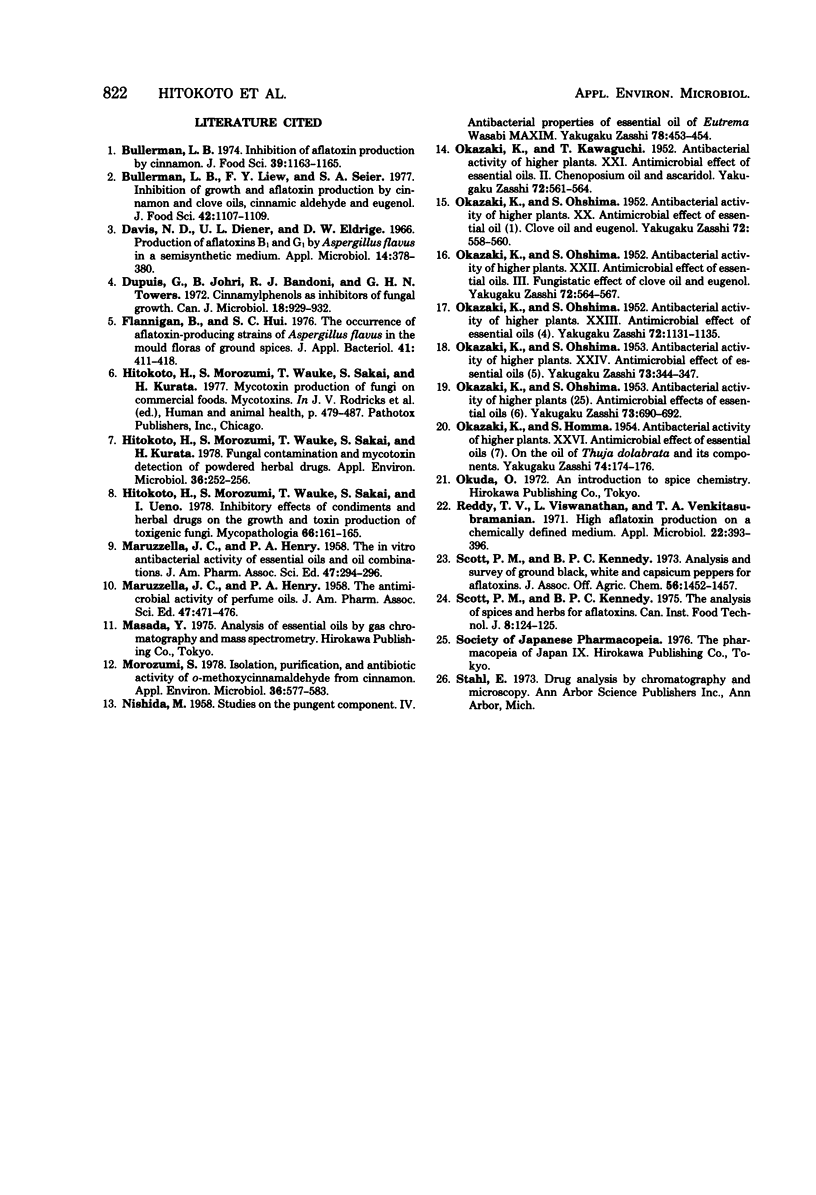
Selected References
These references are in PubMed. This may not be the complete list of references from this article.
- Davis N. D., Diener U. L., Eldridge D. W. Production of aflatoxins B1 and G1 by Aspergillus flavus in a semisynthetic medium. Appl Microbiol. 1966 May;14(3):378–380. doi: 10.1128/am.14.3.378-380.1966. [DOI] [PMC free article] [PubMed] [Google Scholar]
- Dupuis G., Johri B., Bandoni R. J., Towers G. H. Cinnamylphenols as inhibitors of fungal growth. Can J Microbiol. 1972 Jun;18(6):929–932. doi: 10.1139/m72-142. [DOI] [PubMed] [Google Scholar]
- Flannigan B., Hui S. C. The occurrence of aflatoxin-producing strains of Aspergillus flavus in the mould floras of ground spices. J Appl Bacteriol. 1976 Dec;41(3):411–418. doi: 10.1111/j.1365-2672.1976.tb00653.x. [DOI] [PubMed] [Google Scholar]
- Hitokoto H., Morozumi S., Wauke T., Sakai S., Kurata H. Fungal contamination and mycotoxin detection of powdered herbal drugs. Appl Environ Microbiol. 1978 Aug;36(2):252–256. doi: 10.1128/aem.36.2.252-256.1978. [DOI] [PMC free article] [PubMed] [Google Scholar]
- Hitokoto H., Morozumi S., Wauke T., Sakai S., Ueno I. Inhibitory effects of condiments and herbal drugs on the growth and toxin production of toxigenic fungi. Mycopathologia. 1979 Feb 28;66(3):161–167. doi: 10.1007/BF00683965. [DOI] [PubMed] [Google Scholar]
- MARUZZELLA J. C., HENRY P. A. The in vitro antibacterial activity of essential oils and oil combinations. J Am Pharm Assoc Am Pharm Assoc. 1958 Apr;47(4):294–296. doi: 10.1002/jps.3030470421. [DOI] [PubMed] [Google Scholar]
- Morozumi S. Isolation, purification, and antibiotic activity of o-methoxycinnamaldehyde from cinnamon. Appl Environ Microbiol. 1978 Oct;36(4):577–583. doi: 10.1128/aem.36.4.577-583.1978. [DOI] [PMC free article] [PubMed] [Google Scholar]
- Reddy T. V., Viswanathan L., Venkitasubramanian T. A. High aflatoxin production on a chemically defined medium. Appl Microbiol. 1971 Sep;22(3):393–396. doi: 10.1128/am.22.3.393-396.1971. [DOI] [PMC free article] [PubMed] [Google Scholar]


